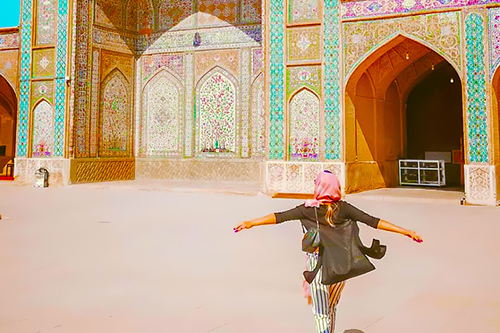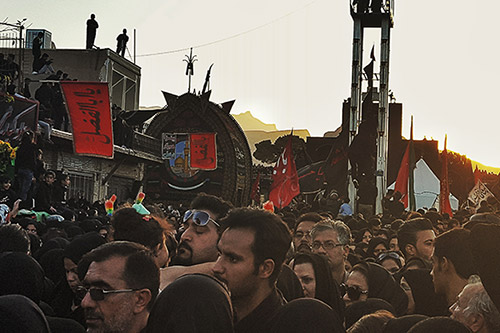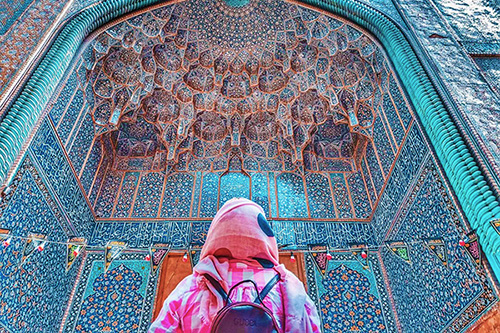 Signin with Google
Signin with Google Signin with Facebook
Signin with Facebook About Iran
About IranReligions in Iran
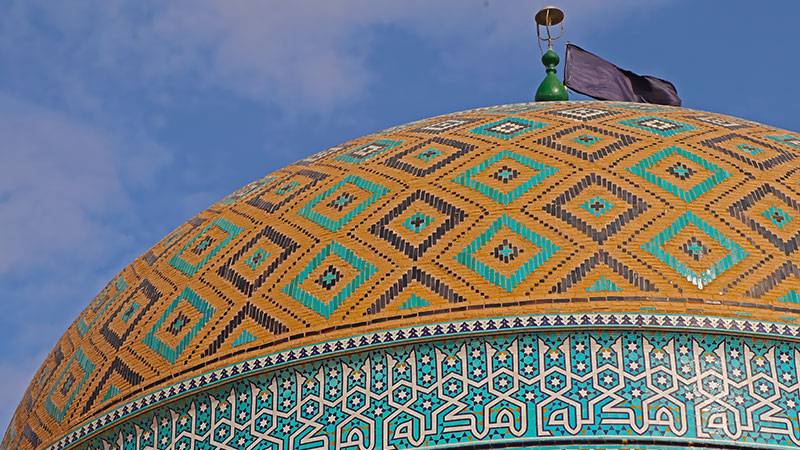
The Islamic Republic of Iran, as its name suggests, is one of the few countries in the world whose government is a theocracy. It means that Iran is ruled by laws considered to have divine authority, namely Sharia law, which is over the Iranian constitution. Therefore, religion is a major aspect of Iranian culture and social life. Yet, besides Islam, the state's religion, Iran has welcomed many other religions on its soil and still do, as well as it has been the birthplace of important faiths in history. If some religions have disappeared since others are still practised in Iran.
Islam, Iran's state religion and minorities
The vast majority of Iranians are Muslims, more precisely Shia Muslim, which is the official religion of the Islamic Republic. Shia Islam is one of the two main branches of Islam, alongside Sunni. One of the biggest differences between these two currents resides in the figure considered as the rightful successor of the prophet. For Shias, it is Ali, the prophet's son-in-law, and his descendants. Shia Muslims are a minority in the Muslim world (10 to 15% of all Muslims), but they represent the large majority in Iran (90 to 95% of the population). Sunnis in Iran are found among ethnic minorities such as Arabs, Kurds, Baluchis, and Turks, populations which are mostly located at the borders of the country.
Islam arrived in Iran with the Muslim conquest of Persia, in the 7th century, which led to the fall of the Sassanid Empire, and has been the official religion since. It's nowadays the world's second-largest religion. This monotheistic faith teaches that God, which is merciful and omniscient, has guided humanity through sacred writings and prophets. Muslims base their faith upon the Quran, a holy book containing the words of God.

Alongside Shiism and Sunnism, other schools of thought are represented in Iran, such as the Sufi order. This latter is often described as the mystical branch of Islam and has been the inspirational force of many Persian writers and poets throughout history. Nowadays in Iran, the number of Sufis is estimated between two and five million. Another religious minority in Iran is the Baha'is, a belief that was born in Persia at the end of the 19th century and is restricted in Iran nowadays.
Rights of religious minorities
Religious independence and respect for other religions in the book derive directly from the writings of the Quran. If Islam is the state religion of Iran, three other religions are officially recognized as minorities by the Islamic Republic: Zoroastrians, Jewish, and Christians. Thus, the members of these religions are legally protected and represented at the Parliament, even though they are not allowed to proselytize. According to the Iranian constitution, they are "free to perform their religious rites and ceremonies, and to act according to their own canon in matters of personal affairs and religious education".
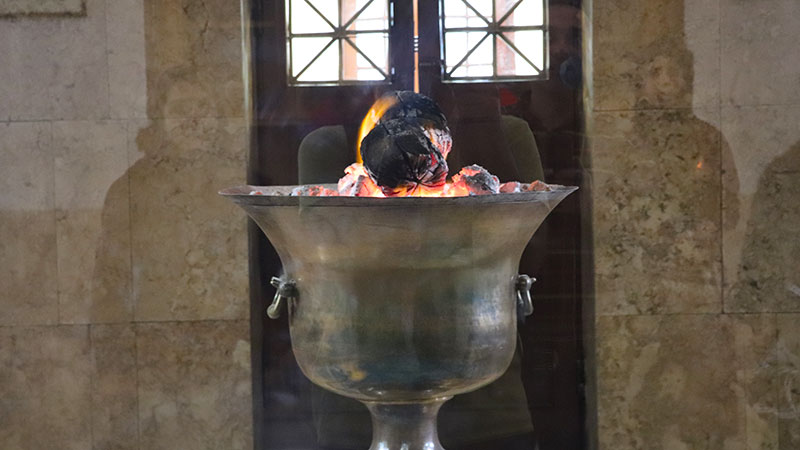
Assyrians and Orthodoxes: Christians in Iran
Christians are an important community in Iran, as it is the biggest minority. They have a long history in Persia, with the Assyrians, which are the most ancient Christian community in Orient. Their origin in ancient Iran dates back to 4000 years. They are currently 30.000 to 50.000 people in Iran, most of them living in the northwest of Iran, around Urmia Lake. Yet, the largest Christian community in Iran are the Armenians, with about 80.000 members today (they were 300.000 in 1979). Beautiful Armenian churches and monasteries can be visited in Isfahan or around the town of Jolfa, in northwest Iran.
If they believe in Christian writings, Assyrians relate to the Church of the East, also called Nestorian or Persia Church, as it was founded under the Persian Empire of the Sassanids. This branch is independent of the authority of the Pope and other Christian leaders, and has its own Patriarch at his head. Armenian Christians are part of another Christian current, the Orthodox Catholic Church, which is the second-largest Christian church in the world.

Jews in Iran, the second Jewish community in the Middle East
The history of the Jews in Iran dates back to centuries ago, and it's the Persian king Cyrus who is credited for liberating the Jews. The founder of the Persian Empire had freed them of the Babylonian captivity and enabled them to return to Jerusalem in order to establish their Temple. He is thus named in the Hebrew Bible as the patron and deliverer of the Jews.
Nowadays, Iran holds the largest Jewish community in the Middle East, outside of Israel, with approximately 25.000 people. Synagogues, Jewish schools, kosher butchers can be found in main cities of Iran, such as Tehran and Isfahan.
Judaism is one of the oldest monotheistic religions and is based on the texts of the Torah, the first book of the Hebrew Bible. It shares similarities with the other religions of the Book, Christianity and Islam, starting with the faith in one just and compassionate God. The Jews are sometimes referred to as the "Chosen People" and believed they have been designated by God to build a better world and society and show others that God exists.

Ancient religions of Iran
Many of the world's oldest religions find their roots in ancient Persia. Several of them were born thousands of years ago and have slowly faded away. Yet, their influence has spread to the edges of Asia and Europe, and have left their marks on many thinkers, writers, and philosophers.
Zoroastrianism, the primary belief of Persia
Zoroastrianism is at the core of Iranian identity. This ancient religion is the world's oldest monotheist faith to be still active. In Iran, it has about 25.000 members (for 300.000 in the 1970s), mainly located in Yazd and Kerman Provinces, while India has the largest population of Zoroastrians today. Before the Muslim conquest of Persia in the 7th century, Zoroastrianism has been the Persian Kings' religion. It was made the official religion of the Empire under the Sassanid Dynasty. Many Zoroastrian Fire Temples exist in Iran, and moreover, rituals and traditions have spread through the Persian culture. Some of the most important celebrations find their roots in Zoroastrianism, such as Nowruz, the Persian New Year.
The Prophet Zoroaster is believed to have lived in Persia around the first century BC. Zoroastrians believe in a single God, named Ahura Mazda, who is the creator of the cosmos and is mentioned in Achaemenid inscriptions and sites such as Persepolis. Zoroastrianism is based on the opposition between the good and the bad, represented by two distinct spirits, and the fact that there is a conflict between order and chaos. To fight this conflict and reach happiness, Zoroastrians follow the principle of "Good thoughts, good words, and good deeds". Many of the teachings of this religion are missing, as it was based on the oral tradition. However, the Avesta is the holy book containing most of the dogma of Zoroastrianism, and the most important parts are the "Gathas", which are hymns believed to have been composed by the Prophet Zoroaster himself.

Mithraism, the forgotten cult of Mithra
Mithraism is more well-known for its importance in the Roman Empire, yet it was imported from Persia where the cult of the god Mithra was originally born, in a pre-Zoroastrian era. Mithraism is a polytheistic religion and one of Persia's oldest faith. Thus it has influenced many other religions, from Zoroastrianism to Christianism and Judaism. Mithra, the god of the sun, justice, oath, and war, is the most important and honoured God. The worship of Mithra was based on natural elements, such as fire and the sun, and this cult slowly declined to eventually disappear in the early 5th century.
The ancient Elamite religion
More ancient than Mithraism is the Elamite religion, which we know little about, as few sources have remained. Most of our knowledge of this ancient religion comes from the archaeological evidence found on different sites in Persia. It was the official religion of Elam, an ancient Pre-Iranian civilization, and counted a vast number of gods. About 200 divinities are mentioned in the texts coming from the ancient city of Susa. The Ziggurat of Chogha Zanbil, in Khuzestan Province, remains an impressive testimony of this religion. This massive structure, built on several storeys, stays quite mysterious but had for sure a major religious significance.
Manicheism, the religion of Mani
Manicheism is another major ancient religion that has disappeared today. It takes its name from its prophet, Mani, who obtained under the reign of the Sassanian King Shapur I, the right to expand its religion. Later, under the reign of Bahram I, Manicheism became the state religion of the Sassanid Empire. The fundamental idea of this faith rests on the struggle between light and darkness, good and evil, and the belief that the salvation of men will be accomplished through the light of the spirit.
Manicheism spread through many parts of the world between the third and seventh centuries, especially with the development of the Silk Road, which brings Manichean ideas from China to the Roman Empire. With the arrival of Islam in Persia though, the religion slowly declines and was even repressed under the Abbasids.
With such ancient history and a large territory, it is no wonder that Persia has welcomed many religions on its soil and seen the rise and fall of many faiths. Nowadays, Iran bears the testimony of this rich multicultural culture, through its numerous mosques, churches, monasteries, and fire temple.
